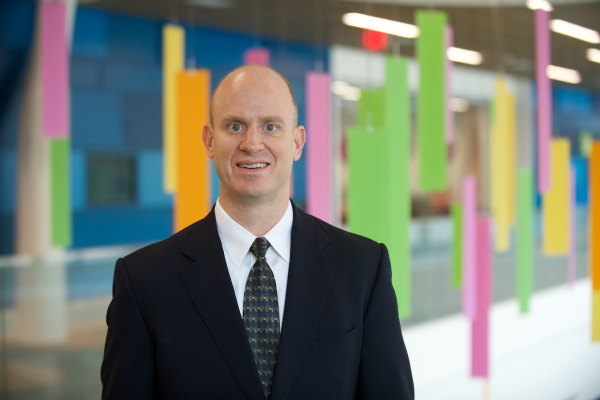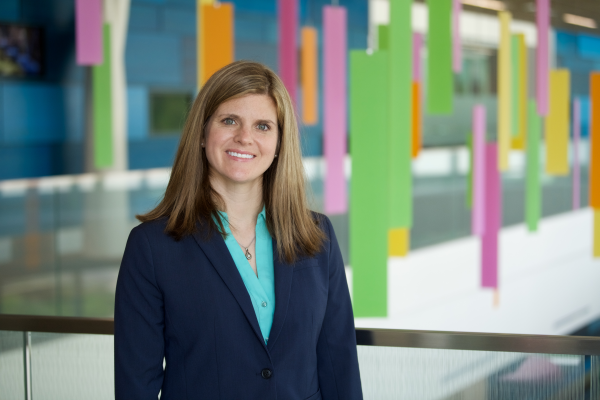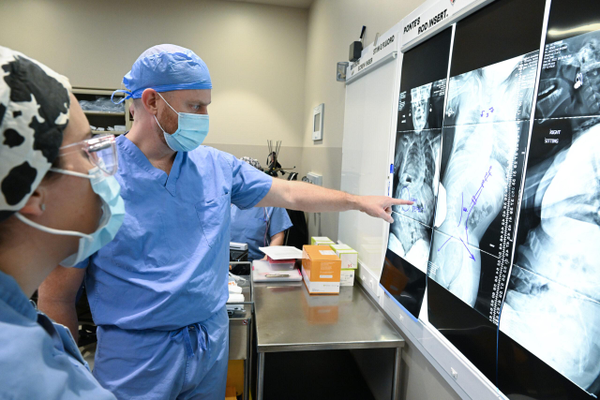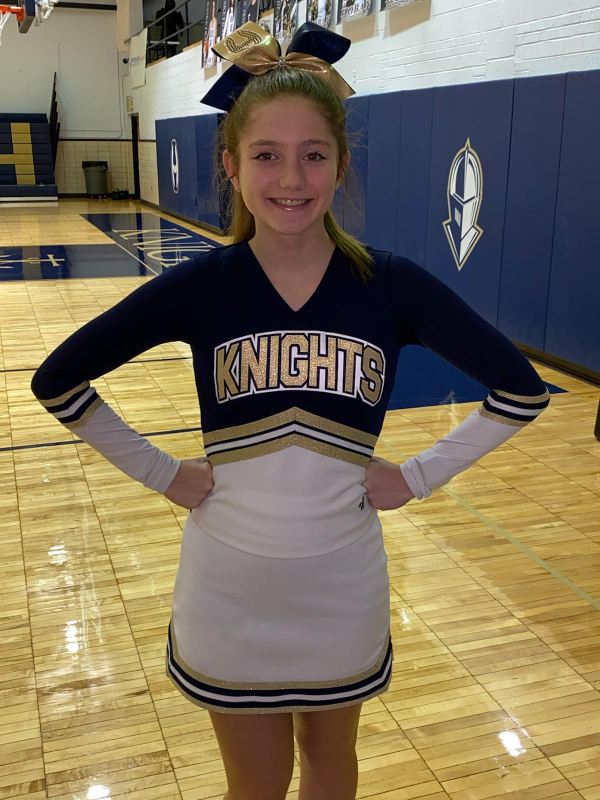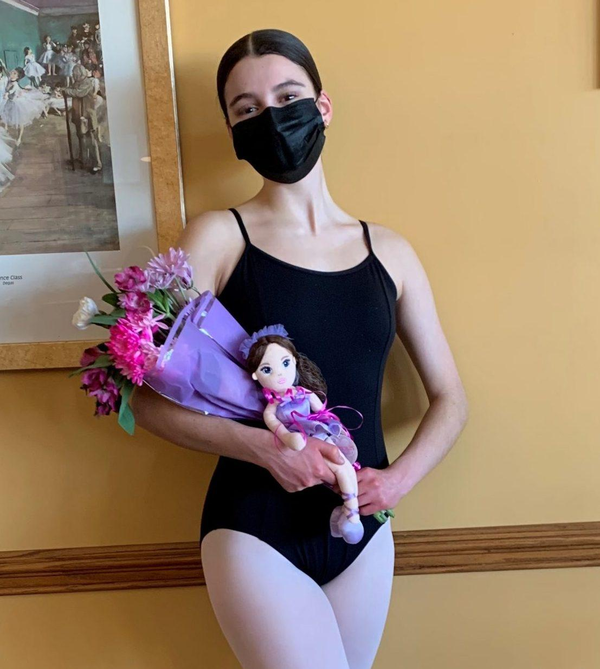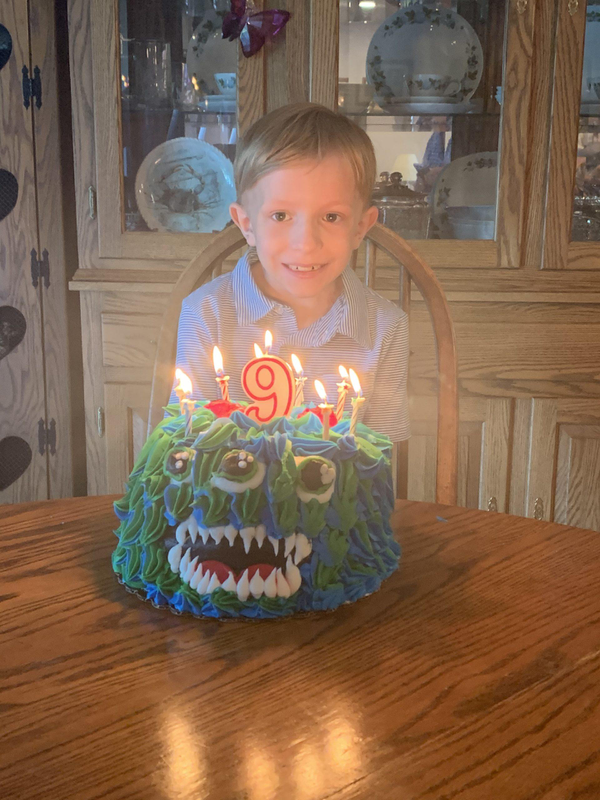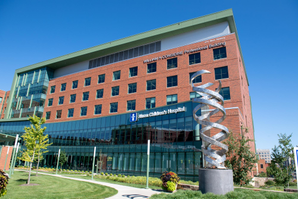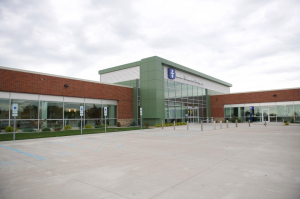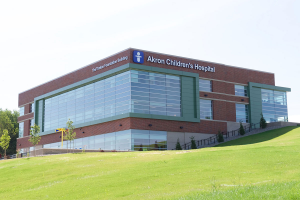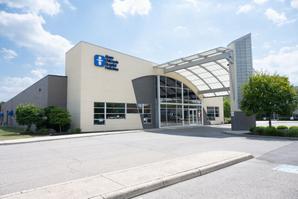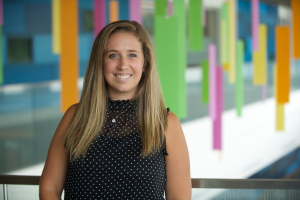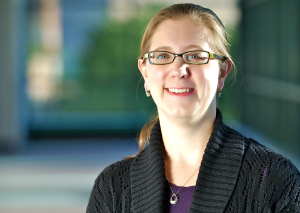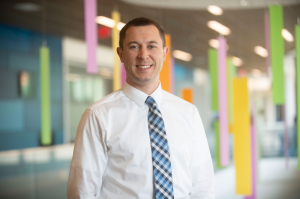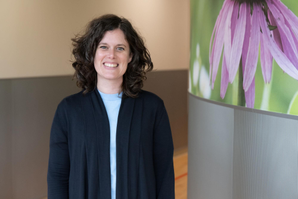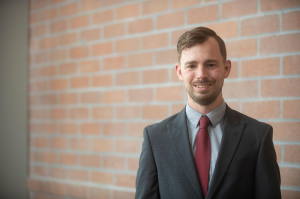Spine Center
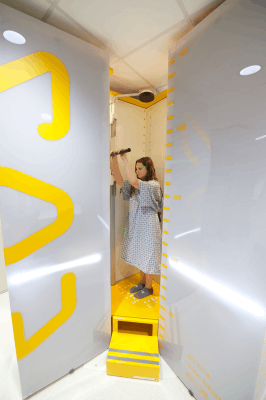
The spine specialists at Akron Children’s are using innovative technologies and techniques to advance care for children and adolescents with abnormal curvature of the spine (scoliosis and kyphosis), as well as other spinal conditions.
Learn more...Department: 330-543-3500
About Spine Center
SPINE CENTER
A CENTER OF EXCELLENCE
Our EOS Ultra Low Dose 2D/3D Imaging System allows quick high quality imaging of spinal deformities, while limiting your child’s exposure to radiation. Learn more.

We are the only facility in the region that offers the Schroth method of Physical Therapy to manage scoliosis. Learn more.

We offer the most advanced care for spinal patients including an operating room dedicated to spinal surgeries and the second hospital in the country with the nView navigational system. Learn more

Make a donation to support the Spine Center at Akron Children’s.
Akron Children’s offers both surgical and non-surgical treatment solutions for pediatric and adolescent scoliosis based on your child’s curvature and age. Surgery is typically only performed on children who are going through puberty and are near the end of growth because the procedure can stop the growth of the spine and interfere with chest cavity growth. If your child is too young to undergo scoliosis surgery, we have several treatment options that allow us to prevent or delay the need for surgery.
We were also the first hospital in Northeast Ohio to obtain an EOS Ultra Low Dose 2D/3D Imaging System, which allows higher quality imaging of spinal deformities, while limiting your child’s exposure to radiation. We’ve also implemented best practices and enhanced care coordination for scoliosis surgery to improve your child’s recovery time and shorten their hospital stay.
Idiopathic scoliosis is the most common spinal problem affecting children and teens. The cause is unknown. In other cases, pediatric scoliosis is congenital, meaning the spinal deformity develops before the child is born. Another form is neuromuscular scoliosis, which can occur in children who have medical conditions that affect their ability to control the muscles that support their back and spine.
Spine Center
Akron Children's Spine CenterConsidine Professional Building
215 West Bowery Street
Level 7
Akron, Ohio 44308
Fax: 330-543-5001
Map & directions
More about this location...
Department: 330-543-3500
Orthopedics, Akron
Akron Children's Orthopedics, AkronConsidine Professional Building
215 West Bowery Street
Level 7
Akron, Ohio 44308
Fax: 330-543-5001
Map & directions
More about this location...
Appointments: 330-543-2778
Department: 330-543-3500
Orthopedics, Boardman
Akron Children's Orthopedics, Boardman6505 Market Street
Building A
Boardman, Ohio 44512
Fax: 330-729-1946
Map & directions
More about this location...
Appointments: 330-543-2778
Department: 330-746-8070
Orthopedics, Boston Heights
Akron Children's Orthopedics, Boston HeightsAkron Children's Health Center, Boston Heights
328 East Hines Hill Road
Boston Heights, Ohio 44236
Map & directions
More about this location...
Appointments: 330-543-2778
Orthopedics, Mansfield
Akron Children's Orthopedics, MansfieldAkron Children's Health Center, Mansfield
1029 South Trimble Road
Mansfield, Ohio 44906
Map & directions
More about this location...
Appointments: 330-543-2778
Department: 419-521-2900
Orthopedics, Medina
Akron Children's Orthopedics, MedinaAkron Children's Health Center, Medina
3778 Medina Road
Medina, Ohio 44256
Map & directions
More about this location...
Appointments: 330-543-2778
Department: 330-722-2468
Orthopedics, North Canton
Akron Children's Orthopedics, North CantonAkron Children's Health Center, North Canton
6076 Whipple Avenue Northwest
North Canton, Ohio 44720
Map & directions
More about this location...
Appointments: 330-543-2778
Orthopedics, Warren
Akron Children's Orthopedics, WarrenThe Market Place
5000 East Market Street
Suite 29
Warren, Ohio 44484
Map & directions
More about this location...
Hours
Monday : 8 a.m. - 5 p.m.
Tuesday : 8 a.m. - 5 p.m.
Wednesday : 8 a.m. - 5 p.m.
Thursday : 8 a.m. - 5 p.m.
Friday : 8 a.m. - 5 p.m.
Saturday : 8 a.m. - Noon
Appointments: 330-543-2778
Department: 330-856-8000
- Non-surgical scoliosis treatments - Tips to Grow By
- Signs of scoliosis - Tips to Grow By
- Akron Children's gives Ukrainian girl the surgery she desperately needed
- Improving Spinal Health
- Meet Dr. Lorena Floccari
- Treating scoliosis in teens
- Meet Dr. Todd Ritzman
- Meet. Dr. Kenneth Bono
- What is Scoliosis?
- How to Detect Scoliosis
- What is Scoliosis Bracing?
- What is Scoliosis Surgery
- Life after Scoliosis Surgery
Open Clinical Studies
Scoliosis Outcomes Database Registry
The goal of this study is to monitor long term-outcomes of adolescent idiopathic scoliosis patients who receive surgical treatment, and patients who choose not to have surgery.
More about this studyPediatric Spine Registry
The goal of this study is to collect patient data on children with spine and/or chest wall disorders.
More about this studyProspective Database Registry of Scheuermann's Kyphosis
The goal of this study is to monitor long term-outcomes of patients with Scheuermann’s Kyphosis who receive surgical treatment, and patients who choose not to have surgery.
More about this studyProspective Database Registry of Scoliosis in Children with Cerebral Palsy
The goal of this study is to monitor long term-outcomes of scoliosis patients who receive surgical treatment, and patients who choose not to have surgery.
More about this studyStudy of Scoliosis Correction in patients with Marfan Syndrome
The goal of this study is to monitor long term-outcomes of patients with Marfan Syndrome who receive surgical treatment for scoliosis, and patients who choose not to have surgery.
More about this studyBracing vs Casting in the Treatment of Idiopathic Early Onset Scoliosis
Please view the study on clinicaltrials.gov for complete study information.
More about this studySafety and Efficacy of Subdermal Betadine During Posterior Spinal Fusion
The goal of this study is to learn about povidone-iodine and its ability to prevent infections specifically in patients with scoliosis receiving a spinal fusion. This will help us learn different ways to keep the infection rate even lower.
Please visit clinicaltrials.gov for complete study details.
More about this studyScoliosis Treatments
Treatment of scoliosis varies based on your child's age and the severity of the spinal curve. The Spine Center, an Akron Children’s Center of Excellence, offers the latest innovations in scoliosis treatment tailored to your child’s specific needs.
Infants and toddlers
At Akron Children’s, scoliosis in infants and toddlers has been treated with Mehta casts with excellent results. Over a year-long period, your child will be placed in a cast that is changed every 6-12 weeks, depending on their growth. The casts are waterproof, making it easier for you to bathe your child. Once the casting process is complete and your child’s curvature is corrected, a brace will be used to keep the spine in alignment as your child grows.
School-age children
Bracing is frequently used in children ages 5-9. A brace will not typically cure your child’s spine deformity, but it can prevent the curve from increasing.
If your child’s curvature worsens before age 10, the spine may not be large enough to allow a definitive spinal fusion, and we may recommend surgery before your child reaches adolescence. In this case, magnetic growth rods or Shilla implants can be used, depending on your child’s condition. These medical devices encourage continued growth of the spine, while controlling or correcting your child’s spinal curve.
Adolescents and teens
Bracing may be an option for your tween or teen with scoliosis, preventing curve progression 75% of the time. We also offer an innovative form of physical therapy known as the Schroth Method that can optimize your child’s function and may be able to improve bracing’s effectiveness to stop or slow your child’s curve progression and prevent further spinal deformity. Schroth physical therapy is typically used with growing children and adolescents.
If surgery is necessary, our orthopedic surgeons will perform a procedure that corrects the spinal deformity and prevents recurrence of the deformity in adulthood. This is called a spinal fusion and helps prevent long term impacts of a curve’s indefinite progression later in life. The surgeon uses metal rods and screws to correct the spine and keep it straight while it heals.
Akron Children’s spinal surgeons prioritize safety and quality. Complex cases are simplified with the use of the innovative O-Arm Surgical Imaging System. This system uses 3D imaging and navigation in real-time to guide surgeons in performing procedures with a higher degree of precision and safety. By using innovative surgical techniques and routinely performing procedures with two attending surgeons, our orthopedic surgeons are able to perform complex procedures safely and efficiently, reducing blood loss and surgical time, which enables excellent outcomes and expedited recovery. This focus on quality and safety enables your teen to return to the activities they love most.
After a spinal fusion, your teen should be able to ease into activities with some restrictions by 3 months, with a full return to activities by 6 months.
- Teens Supporting Teens with Scoliosis
- For parents: A to Z: Scoliosis
- Scoliosis Frequently Asked Questions
Three out of every 100 children have some form of scoliosis.
That’s why Akron Children’s created SpineScreen: a way to check for the signs of scoliosis while putting sunscreen on your child.
Getting kids to stand still can be a challenge. So, when you’re already applying sunscreen on their backs, add in a quick scoliosis check to look for the telltale signs. It’s so easy, you can do it while applying the sunscreen.
Here’s what to look for:
- One hip resting higher than the other
- A left or right curve of the spine
- Uneven shoulders
If you notice any of these signs, schedule an appointment with your provider to have a thorough evaluation.
With the decrease of school screenings, scoliosis is not being detected as early. By getting screened yearly – or more frequently – scoliosis can be detected earlier, helping teens avoid surgery with a brace and Schroth physical therapy. In fact, 75% of the time, bracing is an effective treatment to stop or slow curve progression and prevent further spinal deformity.
Scoliosis Stats:
- Catching scoliosis early can help prevent the need for surgical treatment.
- Scoliosis is often painless in early or less severe stages.
- Scoliosis is often diagnosed during childhood and early adolescence.
- The best way to catch scoliosis early is with regular pediatric exams
- Informed parents can increase the chances of catching it early – especially between pediatric appointments.
Akron Children’s uses care pathways -- standardized plans of care that follow best practices for specific conditions or medical procedures. These care pathways are clearly defined and fine-tuned to guide our medical professionals in delivering the best care to our patients.
SCOLIOSIS PATHWAY
Akron Children’s Spine Center has a multidisciplinary team of experts that follows a comprehensive, evidence-based pathway for patients undergoing surgical correction of spinal curvature. By incorporating best practices before, during and after scoliosis surgery, this pathway has improved patient comfort and mobility, shortened the number of days in the hospital by more than 50%, significantly decreased the cost of care and yielded excellent patient outcomes.
PAIN MANAGEMENT GUIDELINES FOR SURGICAL PROCEDURES
Akron Children’s orthopedic surgeons were the first group of surgeons in the United States to develop guidelines for the appropriate management of pain once patients go home after surgery. These guidelines encourage the use of non-narcotic medications as much as possible, while reserving narcotics only for the treatment of severe pain. By following these guidelines, our orthopedic surgeons have decreased the use of narcotics and the associated risks, while still providing good pain control for our patients.
ACL PATHWAY
The sports medicine surgeons at Akron Children’s have reviewed all of the best methods of care for patients undergoing ACL reconstruction. They’ve incorporated these practices into a care pathway that starts before surgery and continues until the patient has returned to the activities they enjoyed before the injury. This care pathway enhances the hospital experience for our patients and their families and, ultimately, leads to better overall outcomes for our patients.
NEUROMUSCULAR HIP PATHWAY
Our multidisciplinary team has developed a pathway for patients undergoing hip surgeries to maximize the health of their hips long term. Our surgical pain management techniques and collaboration between our medical and orthopedic teams ensure that our patients recover from their hip procedures in the most comfortable and safest environment possible.
Conditions and Treatments:
Back fracture, back injury, back pain, back stress fracture, broken back, cerebral palsy, cervical fracture, cervical neck pain, cervical radiculopathy, cervical spine injuries, cervical strain, cervicalgia, congenital musculoskeletal deformity of spine, curvature of spine, diastrophic dysplasia, disorder of intervertebral disc, fractured spine, herniated disc, herniated disk, hump back, idiopathic scoliosis, kyphosis, lordosis, low back pain, myelomeningocele, neck injury, neck pain, neck strain, pars defect, Scheuermann's disease, scoliosis, spine fracture, spine injury, spondy, spondylolisthesis, spondylolysis, sway back, sciatica, scoliosis evaluation, spine fracture, spondylosis, stress fracture













